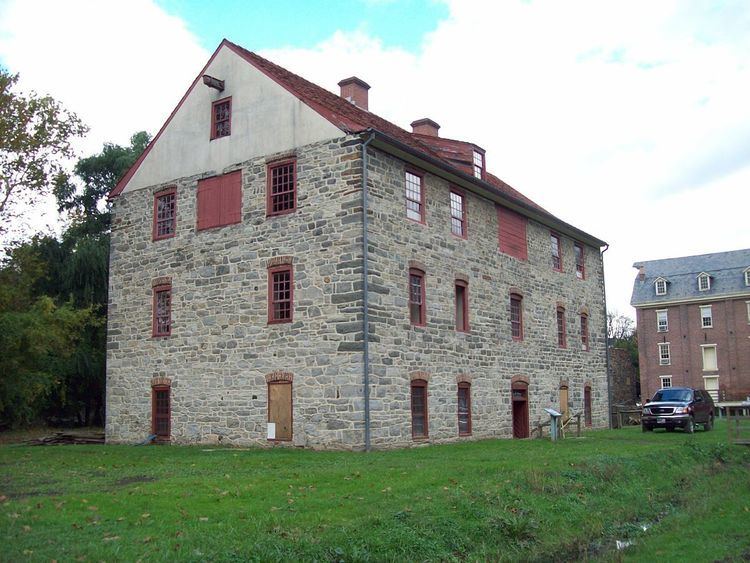NRHP Reference # 12001016 Area 6 ha | Designated NHLD October 6, 2012 Added to NRHP 6 October 2012 | |
 | ||
Location Church, Market and Main Streets, Bethlehem, Pennsylvania | ||
The Historic Moravian Bethlehem Historic District encompasses a complex of the oldest surviving buildings in Bethlehem, Pennsylvania. It was added to the National Register of Historic Places in 1972, with a Boundary Increase in 1988. The National Historic Landmark District is a subset of the larger Central Bethlehem Historic District, which is specifically focused on the early buildings constructed by the Moravians who settled the city in the 18th century. The district was designated a National Historic Landmark in 2012 for its unique assemblage of communal religious buildings and history.
Description and history
The Historic Moravian Bethlehem Historic District occupies a discontiguous 14.7-acre (5.9 ha) area of central Bethlehem. Its central core consists of the Moravian Museum of Bethlehem and adjacent properties, located at Main and West Church Streets east of Monocacy Creek which is a tributary of Lehigh River in Northampton County. The museum property includes a connected series of 18th-century stone buildings, several of which served as communal living facilities, and a 1751 chapel. One of these, the Gemeinhaus, (Also known as the Lewis David de Schweinitz Residence or the Moravian Museum.) is a National Historic Landmark for its association with botanist and mycologist Lewis David de Schweinitz who used to take up residence in the building. The museum also owns properties near the creek, including the industrial 1761 tannery building which is a limestone building built in 1761, and the 1762 Waterworks (Also known as Old Waterworks) Also a National Historic Landmark as the first North American municipal water supply. This area is also archaeologically significant, as the early Moravians developed it industrially from an early period. Non-museum properties include the 1803-06 Central Moravian Church, the God's Acre (Moravian burial ground) ,and the 1758-60 Moravian Sun Inn, located further up Main Street. God's Acre has been established as one of the oldest colonial cemeteries in America. Sun Inn was created as a place for non Moravian people to take up residence while they did any sort of business with the people that lived in the town. The Sun Inn was used often during the American Revolution. It was used by a few important people in history such as George Washington, Martha Washington, Benjamin Franklin, Samuel Adams, John Hancock and John Adams.
Bethlehem was settled in 1741, and was the first successful community established by German Moravian Church adherents in North America. It consequently became a central point for later Moravian settlements across what is now the eastern United States. Because some of its earliest communal buildings were built in stone, they have survived the subsequent history of the city. These buildings house the community's single men and women (segregated by sex), and served as its early places of worship (the Gemeinhaus). Bethlehem remained under strong Moravian religious influence until the early 19th century, when the community began to become more secular. One of the living facilities segregated by sex in this area was called the Single Sisters' House] and it is a place where single Moravian women would live before they were married or after they were widowed. There were three significant additions to the Sisters House after it was built. The original version of the Single Sisters' House was built in 1744 and was a two story stone building that lacked a basement and a kitchens. Then there was the second version of the Sisters' House which was when a Northern Wing was added to the Sisters' House. The Northern Wing included a few new changes to building which were a new dormitory a larger dining area and in the later future a chapel. The next addition that was made was the last addition made to the building. The addition included a building that was raised above the building on a basement and it was the first time that architectural detail was included in a Moravian building. The Single Sisters' House is located on West Church Street near the Bethlehem Public Library. The Single Brethens' House was a building that served the same purpose except it was a place where single and widowed Moravian men would live.The Single Brethens' House is located on Main Street.
